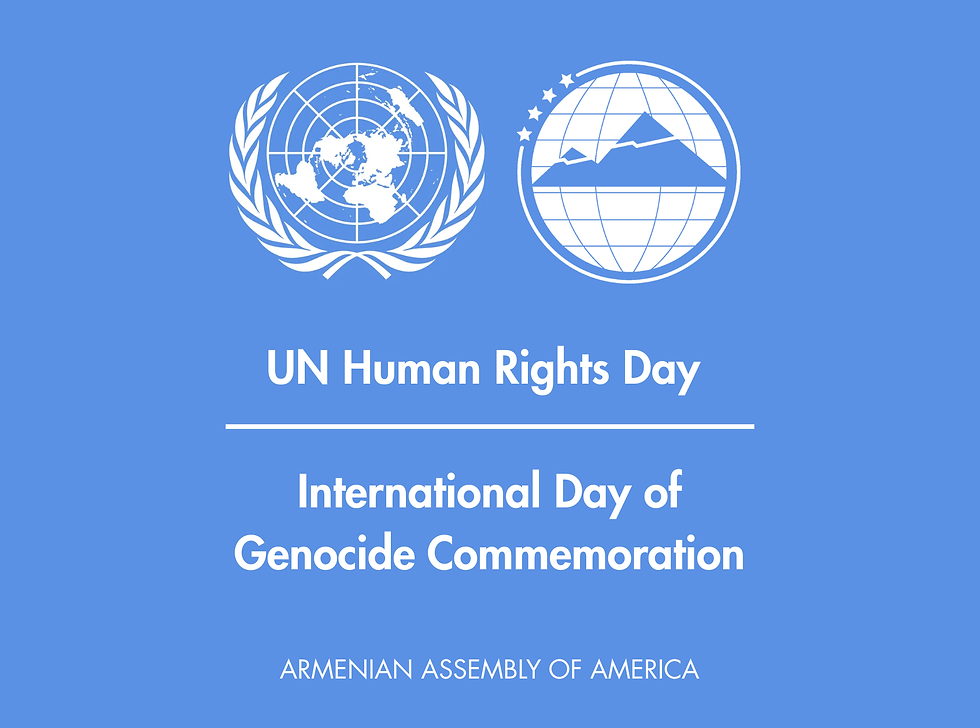“Go Where No One Else Will”: Mount Holyoke Missionaries in Eastern Turkey Before and During the 1915
- Armenian Assembly of America

- Feb 23, 2015
- 3 min read
Updated: Jul 27, 2021
By Ava M. Gurekian AAANews Blog

Grace Knapp, an 1893 graduate of the all-women’s Mount Holyoke College in South Hadley, Massachusetts and missionary to Eastern Turkey until October 1915, described the Ottoman oppressors in a letter saying: “…they are perfectly heartless as to each others’ sufferings and will not care for the children of those who die, even when it would not be the least out of their way to do so.” (Letter from Grace H. Knapp ‘93 to Dr. James L. Barton; written in Van, Turkey. June 14/28 1915. Mount Holyoke College Archives)
The Armenian Genocide was the Ottoman Turkish Empire’s systematic extermination of one and one-half million Armenians living in their historic homeland, within the territory that is now part of modern-day Turkey. April 24, 1915, is widely remembered as the starting date, almost 100 years ago. The genocide consisted of the killing of the able-bodied male population and the deportation of women, children, the elderly, and the sick on death marches to the Syrian Desert. A fortunate few escaped their homeland and dispersed to various parts of the world, landing in areas ranging from Lebanon and Syria, to Eastern Europe, the European Union, and the United States.

A Mount Holyoke College missionary presence existed in regions where the massacres took place before and during 1915. Charlotte Elizabeth and Mary Ann Caroline Ely were missionaries and teachers in Bitlis, Turkey from 1868-1915. Grace Knapp was born to missionary parents in Bitlis and after graduating from Mount Holyoke in 1893, returned to Turkey to teach at the Mount Holyoke Female Seminary of Bitlis, the American School in Erzerum (1896-1898), and the American School in Van (1913-1915). She worked with refugees in Van during and after the Armenian massacres in 1915 and when foreigners were forced out she returned to the United States in October 1915.
Genocide is, according to the Convention on Genocide’s 1948 definition, “any…act…committed with intent to destroy, in whole or in part, a national, ethnical, racial or religious group” (Convention on Genocide). Acts of the like include: “causing serious …harm to…the group”; “killing members of the group”; prescribing “measures…to prevent births within the group”; ‘intentionally inflicting on the group conditions of life…to bring about its physical destruction”; and “forcibly transferring children of the group to another group” (Convention on Genocide). The Medz Yeghern, an Armenian term used by survivors in reference to the atrocity, to the loss of loved ones and of property, and to the loss of their culture and homeland, was in fact genocide.

An exhibit depicting the relationship between Mount Holyoke and the Armenian Genocide titled “Go Where No One Else Will”: Mount Holyoke Missionaries in Eastern Turkey before and during the 1915 Armenian Genocide” will be on display in the Mount Holyoke College Williston Library Atrium in South Hadley, MA until Friday February 27th. The exhibit is curated by Mount Holyoke senior Ava Gurekian to commemorate those lost in the Armenian Genocide almost 100 years ago and to educate the community about Mount Holyoke’s important missionary presence and educational influence in the region.
This exhibit complements a lecture on February 19 at 7:00 p.m. in Dwight Hall 101 at Mount Holyoke College. The lecture was presented by Dr. Ronald Suny of University of Michigan titled “They can live in the Desert but Nowhere Else: Explaining the Armenian Genocide.”
Ava M. Gurekian is a senior at Mt. Holyoke College majoring in International Relations and French, with a minor concentration in Economics. Ava is an alumnus of the Armenian Assembly of America’s Summer Internship Program (Class of 2013).
*This article was corrected to reflect the extended date of the exhibit. The exhibit is now open through Friday, February 27th.


